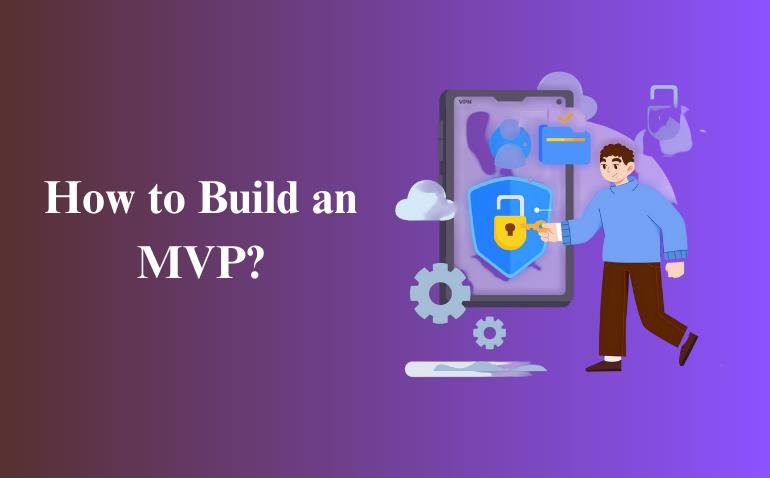Table of Contents
How to Build an MVP: A Complete Guide for Startups and Entrepreneurs
In today’s hyper-competitive digital landscape, startups and businesses cannot afford to spend months or even years building a product without knowing whether users actually want it. That’s where the Minimum Viable Product (MVP) comes in. If you’re wondering how to build an MVP that helps validate your idea, attract investors, and minimize risk, this comprehensive guide will walk you through every stage of the process.
By the end of this article, you’ll understand what an MVP is, why it matters, and the exact steps you need to take to create one successfully.
What is an MVP?
An MVP (Minimum Viable Product) is a version of a product that includes only the essential features needed to solve a problem for early users. The purpose of an MVP is not to launch a “perfect” product but rather to test assumptions, validate ideas, and gather feedback with minimal resources.
Eric Ries, author of The Lean Startup, popularized the concept of MVP by emphasizing that startups should “learn as quickly as possible” whether their product is viable in the real market.
Instead of waiting years and burning through capital, building an MVP allows you to:
- Launch quickly with core features.
- Gather real customer feedback.
- Test your value proposition.
- Attract investors with proof of concept.
- Save time, money, and effort.
Why Should You Build an MVP?
Before diving into how to build an MVP, let’s understand why it is a game-changer for startups:
- Validates Your Idea
An MVP helps you check if your product actually solves a real problem for users. - Saves Time and Money
Instead of building a full-fledged product, you build only what’s necessary, which saves resources. - Reduces Risk
You avoid the risk of building a product nobody wants. - Attracts Early Adopters
MVPs help you build a user base early, who can give insights for future versions. - Helps Secure Funding
Investors are more likely to fund your idea when they see a working MVP.
Steps on How to Build an MVP
Now that you know why an MVP matters, let’s get into the detailed step-by-step process of how to build an MVP.
1. Identify the Problem You’re Solving
Every successful product begins with solving a real problem. You need to ask:
- What issue are you addressing?
- Who faces this issue?
- Why is solving it important?
Example: Uber identified the problem of people struggling to find affordable, reliable rides quickly. Their MVP allowed users to book a cab through a mobile app.
2. Define Your Target Audience
An MVP is not for everyone—it’s for the early adopters. You need to clearly define who your target audience is.
- Create user personas (age, profession, income, pain points).
- Understand what motivates them.
- Focus on early adopters who are willing to try new solutions.
3. Research the Market
Before you move forward, validate your assumptions with market research.
- Study your competitors.
- Understand customer expectations.
- Identify gaps in the market.
Example: Dropbox studied cloud storage competitors but realized most products were too complex for average users. Their MVP was a simple demo video showing how Dropbox worked.
4. Define the Core Features
This is the most crucial step in building an MVP. You must prioritize features that solve the main problem.
- List all potential features.
- Categorize them into “must-have” and “nice-to-have.”
- Use frameworks like the MoSCoW method (Must-have, Should-have, Could-have, Won’t-have).
Remember, your MVP should do one thing well instead of trying to do everything.
5. Create a Value Proposition
Your MVP must communicate its unique value proposition (UVP). Users need to understand why your product is better than existing alternatives.
Example: Airbnb’s value proposition was simple: “Book rooms from local people instead of hotels.”
6. Choose the Right Technology Stack
Your MVP doesn’t need the most advanced tech. Instead, choose a technology stack that allows you to:
- Launch quickly.
- Scale later.
- Keep development costs low.
For example, many startups use React Native for mobile apps because it allows cross-platform development.
7. Design a Prototype
Before jumping into development, create a prototype to visualize your product. This step helps you refine the user experience (UX).
- Use tools like Figma, Sketch, or Adobe XD.
- Create wireframes and mockups.
- Test the design flow with a small audience.
8. Build the MVP
Once the prototype is finalized, move into actual development. Keep the build lean and focused only on essential features.
- Follow agile methodology.
- Create iterations (sprints).
- Involve developers, designers, and product managers.
9. Test the MVP
Testing ensures your MVP is functional and usable.
- Conduct quality assurance (QA) testing.
- Fix bugs and glitches.
- Make sure the core feature works smoothly.
10. Launch to Early Adopters
After testing, launch your MVP to a small group of early adopters. These are people most likely to provide honest feedback.
You can launch on platforms like:
- BetaList
- Product Hunt
- Indie Hackers
11. Gather Feedback
This step is the heart of building an MVP. Collect feedback from users to learn:
- What they like.
- What they don’t like.
- What features they want next.
Use surveys, interviews, and analytics tools to track usage.
12. Measure Success with KPIs
To know whether your MVP is successful, measure it against specific Key Performance Indicators (KPIs) such as:
- Number of active users.
- User engagement rate.
- Retention rate.
- Conversion rate.
13. Iterate and Improve
The feedback loop never stops. Based on user feedback, continue to improve your MVP.
- Add new features only if users demand them.
- Remove unnecessary functions.
- Optimize performance.
Common Mistakes to Avoid While Building an MVP
While learning how to build an MVP, many startups fall into traps. Here are some common mistakes:
- Building too many features. Keep it simple.
- Ignoring market research. Always validate assumptions.
- Targeting everyone. Focus on early adopters.
- Skipping feedback. User input is critical.
- Scaling too soon. Perfect your MVP before expanding.
Real-Life Examples of Successful MVPs
To inspire you, here are some famous companies that started with an MVP:
- Airbnb: Started by renting out an air mattress in their apartment.
- Uber: Began with a simple app connecting riders and drivers in San Francisco.
- Dropbox: Launched with a demo video instead of a full product.
- Facebook: Initially built for Harvard students only.
These examples show how powerful MVPs can be in validating ideas and scaling into billion-dollar companies.
Cost of Building an MVP
The cost of building an MVP depends on:
- Features included.
- Technology stack.
- Team expertise.
- Development location.
On average, MVP development can cost anywhere between $10,000 to $50,000, depending on complexity. Outsourcing development often reduces costs significantly.
Final Thoughts: How to Build an MVP Successfully
Building an MVP is not about cutting corners—it’s about being smart with your resources. By focusing on the essential features, validating your idea, and iterating based on feedback, you increase your chances of building a product that truly resonates with users.
To recap, here’s the process of how to build an MVP:
- Identify the problem.
- Define your audience.
- Conduct market research.
- Prioritize core features.
- Create a value proposition.
- Select the right tech stack.
- Design a prototype.
- Develop the MVP.
- Test thoroughly.
- Launch to early adopters.
- Gather feedback.
- Measure KPIs.
- Iterate and improve.
An MVP is your first step toward turning an idea into a reality. Done right, it can help you build a product users love while saving time, money, and effort.


